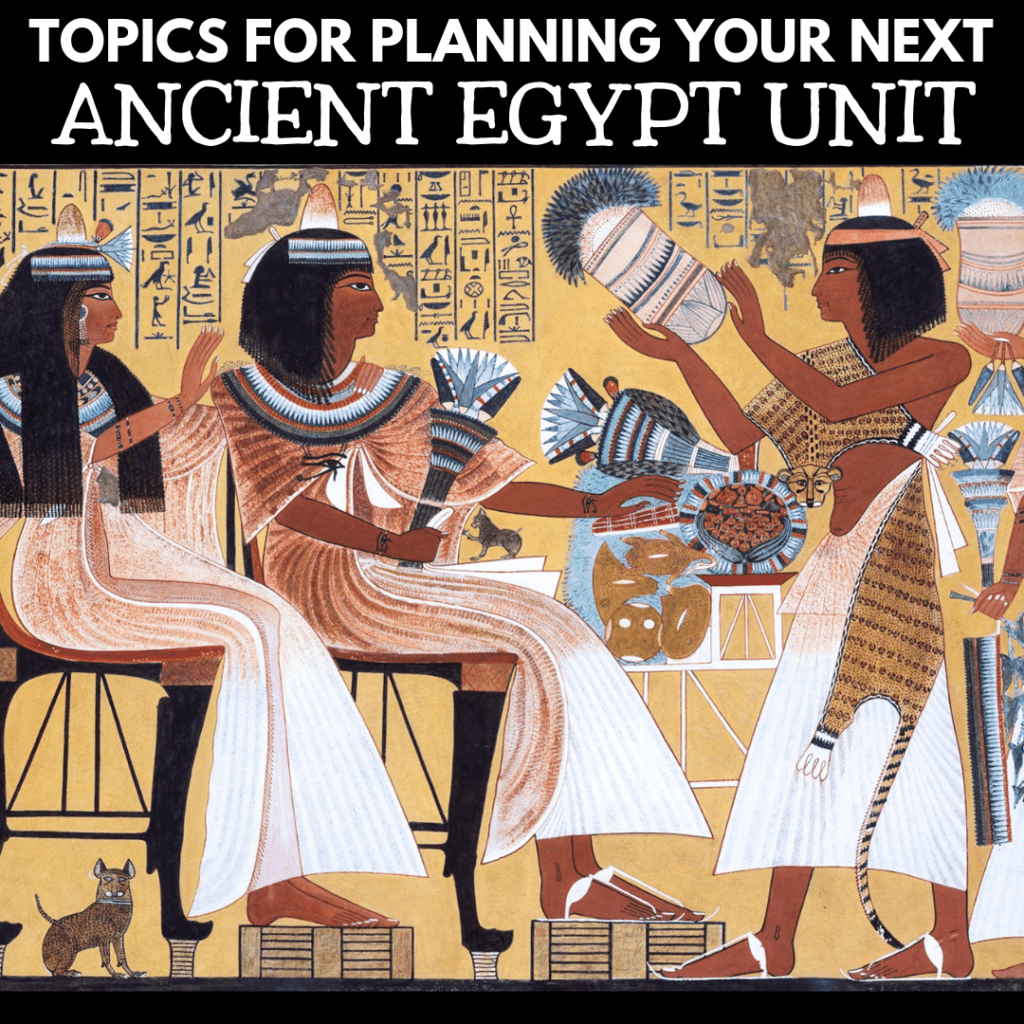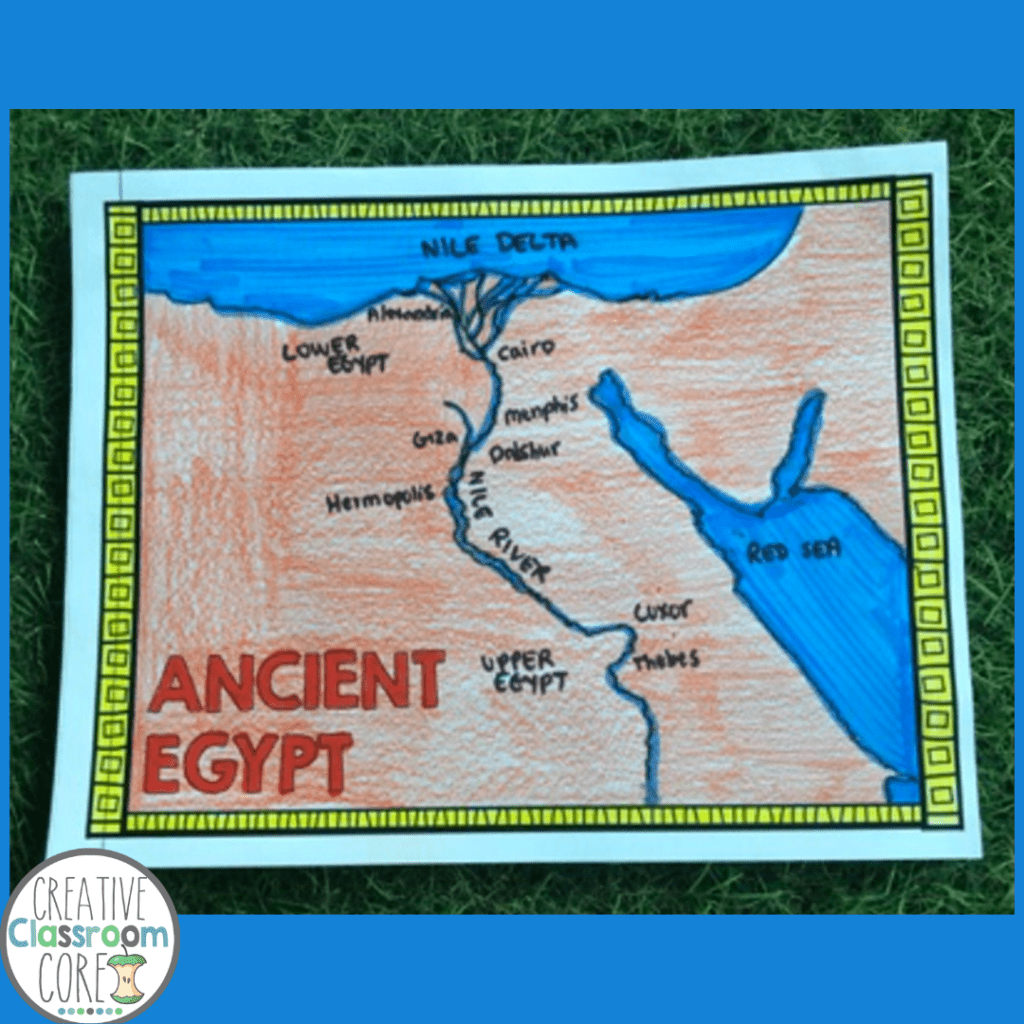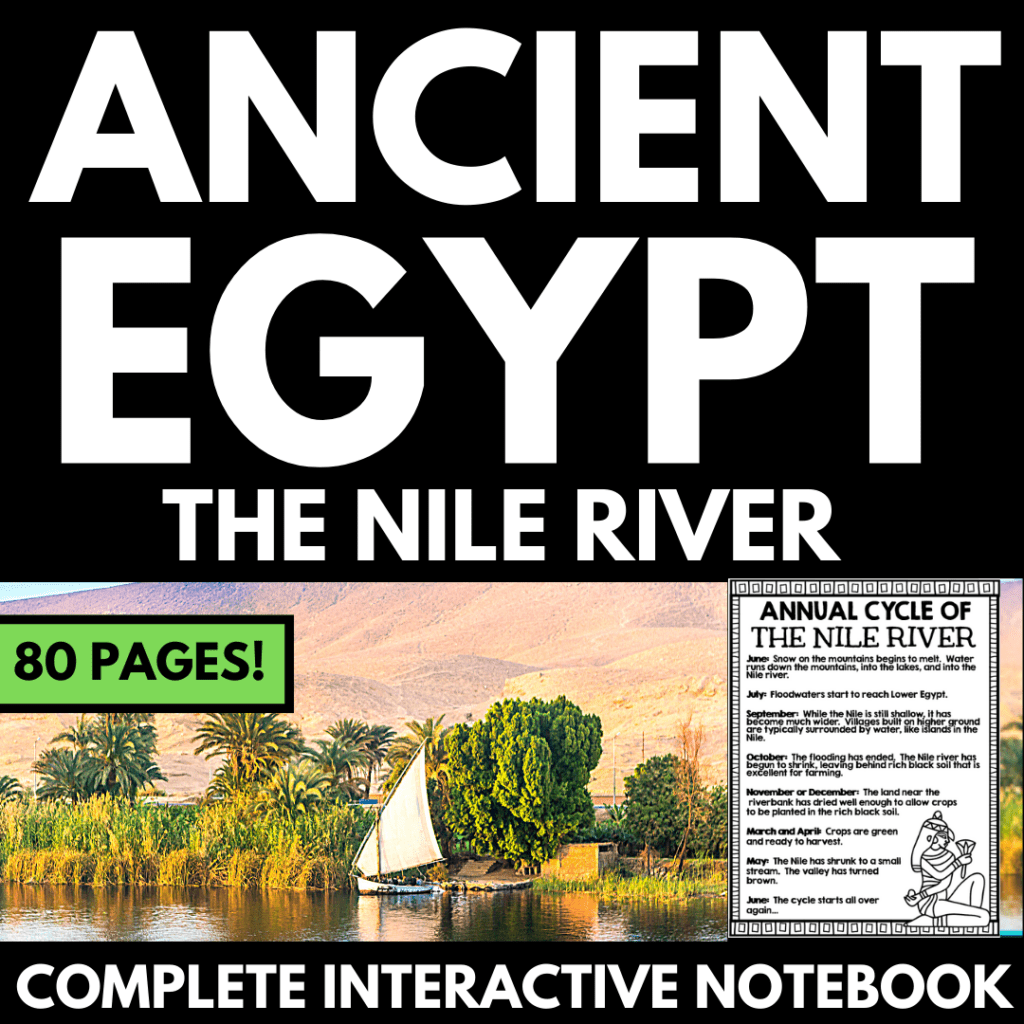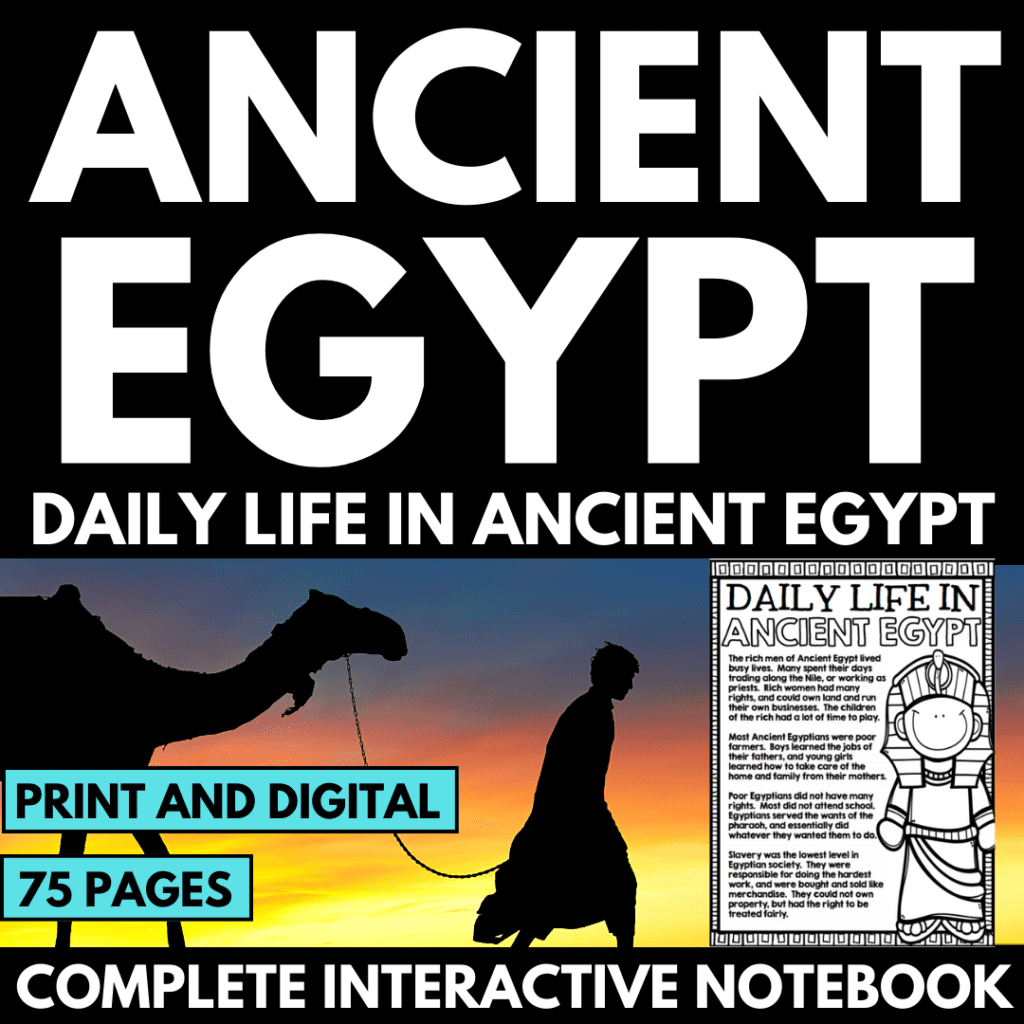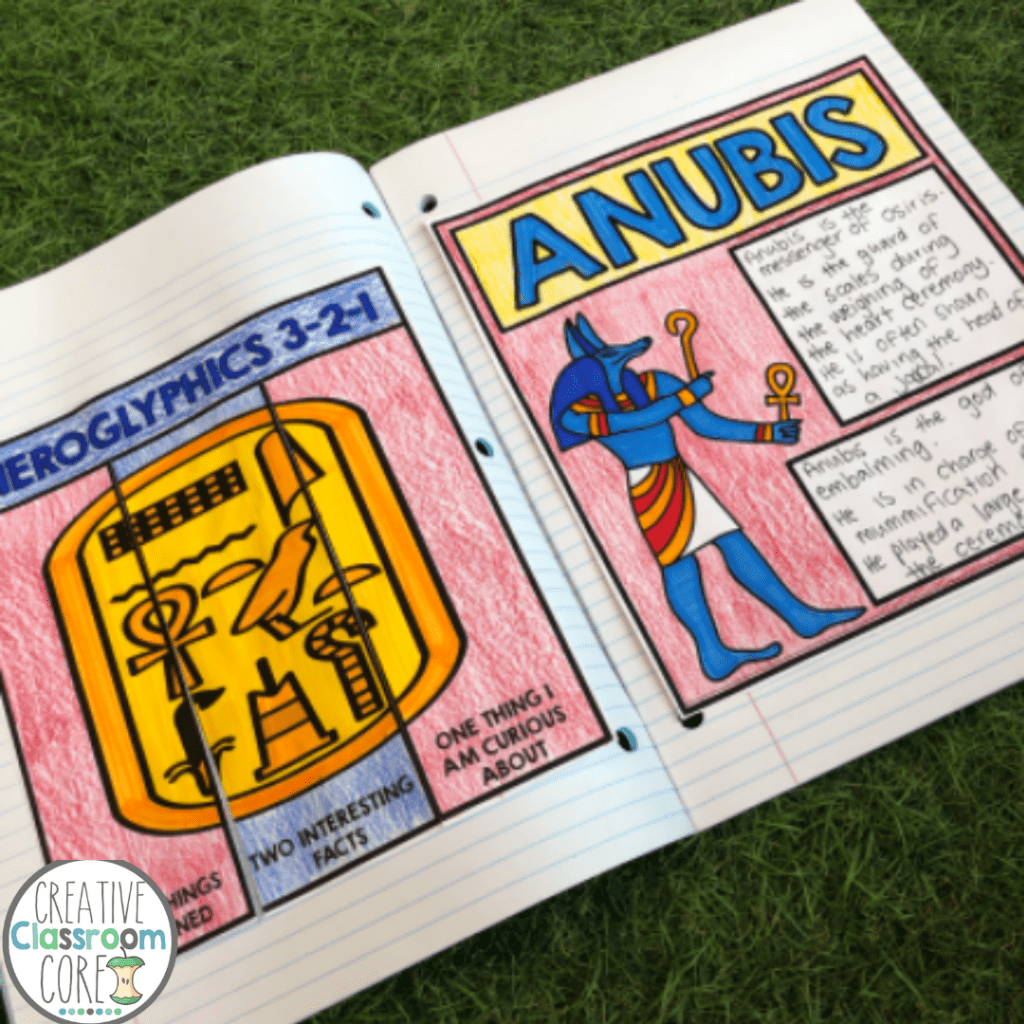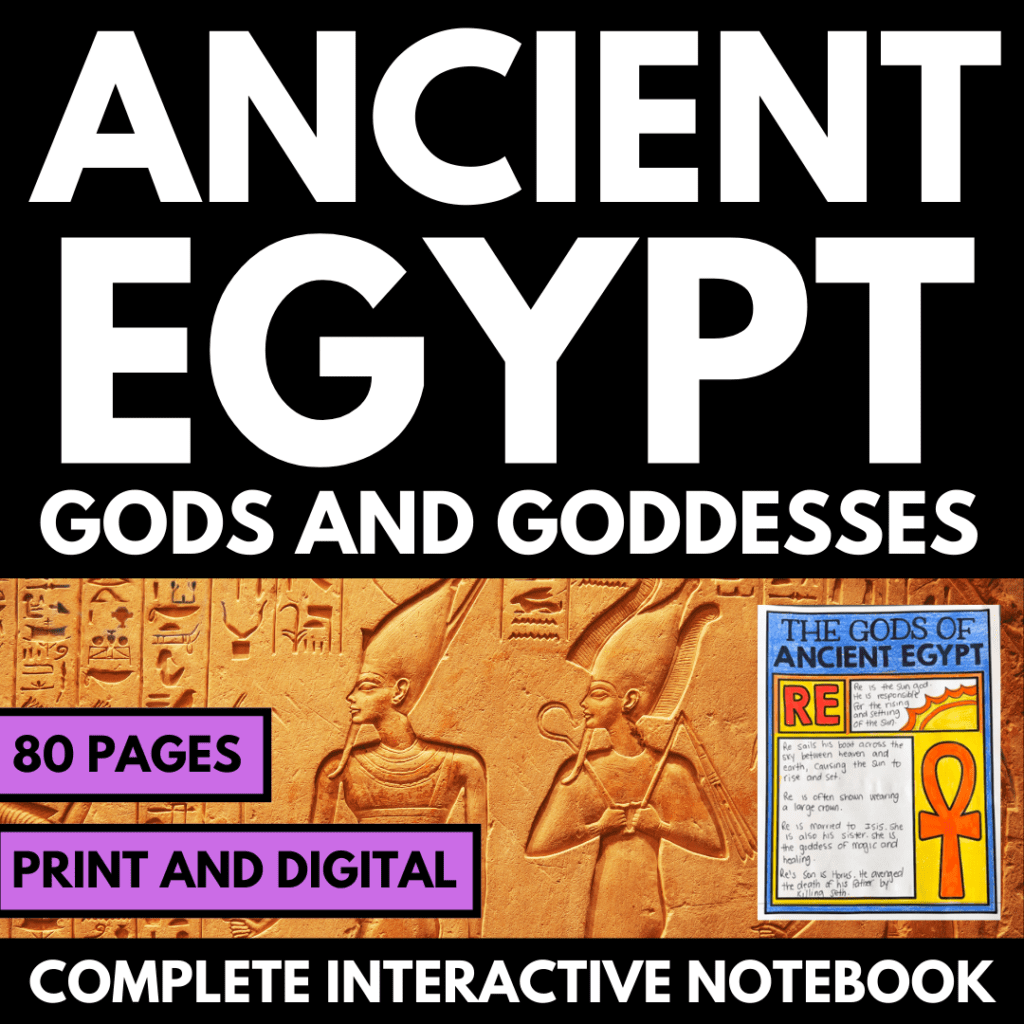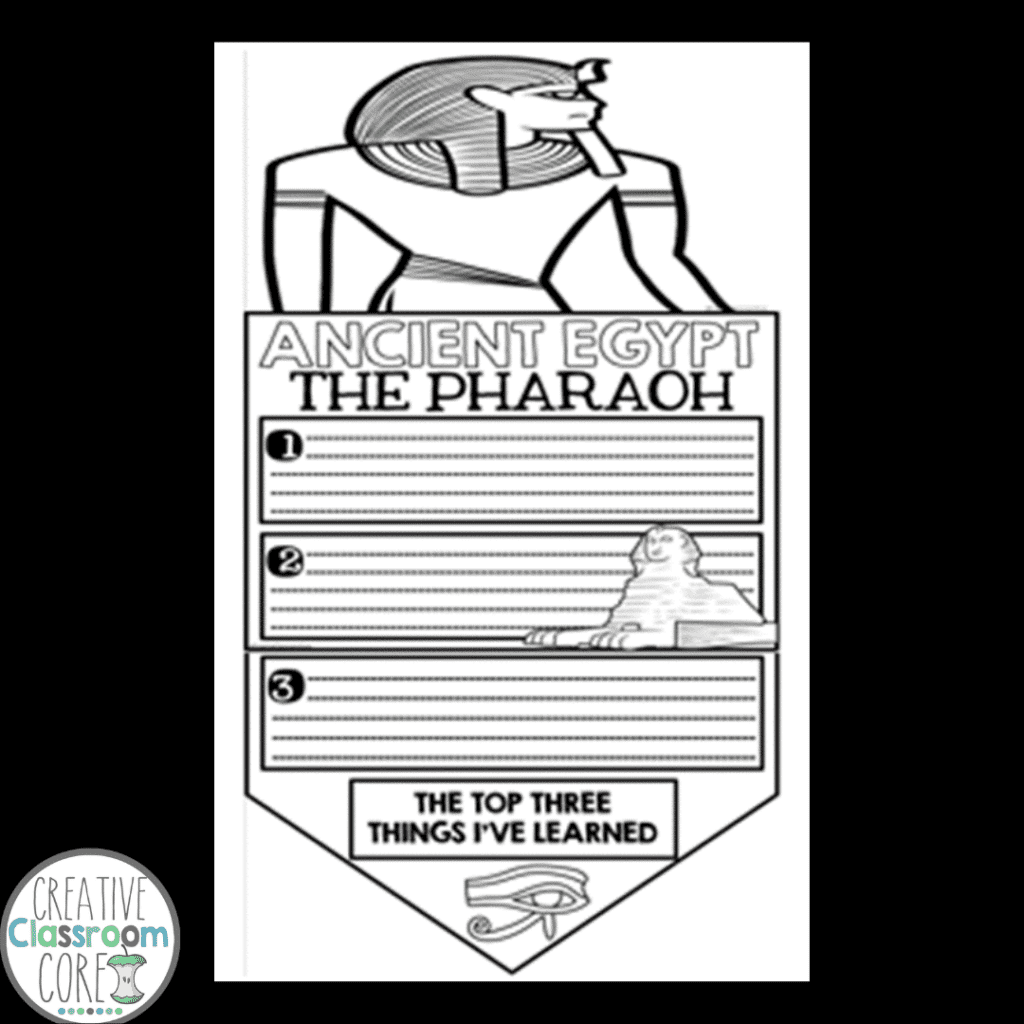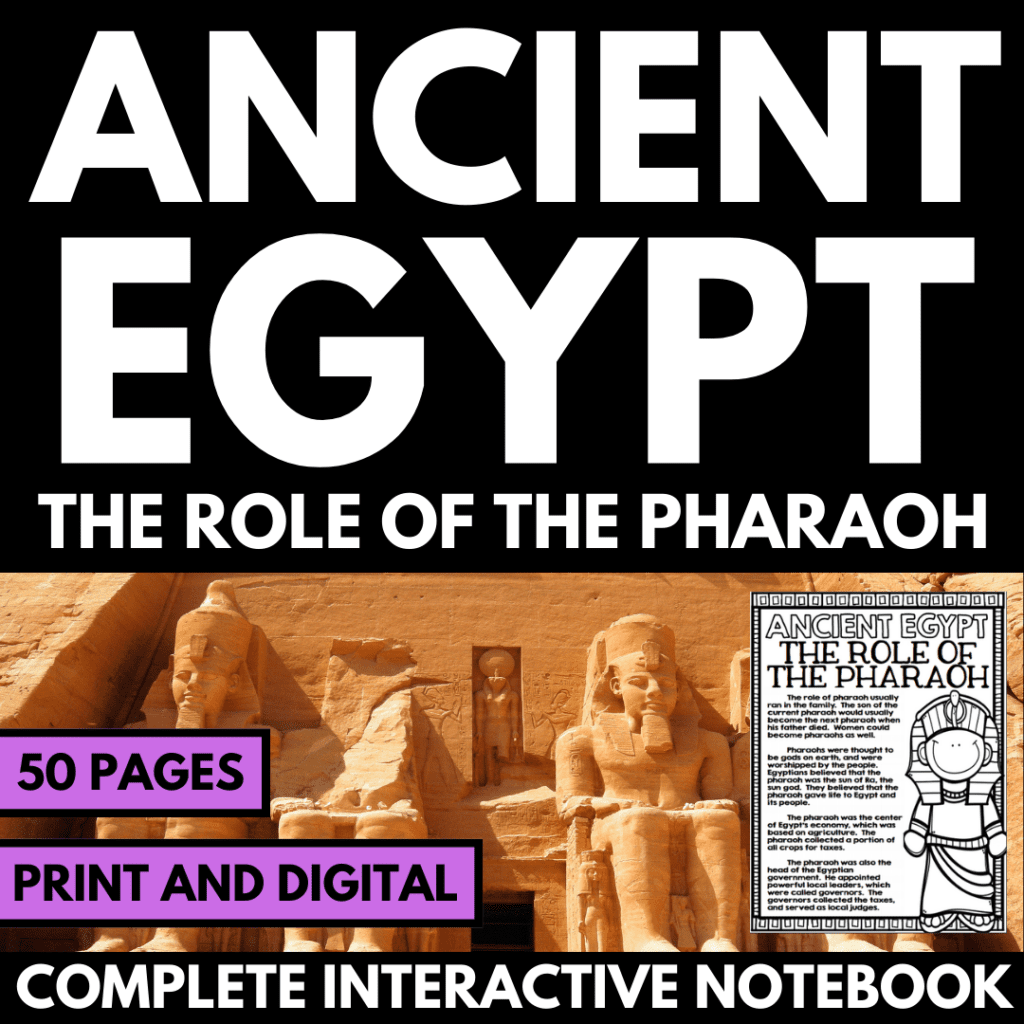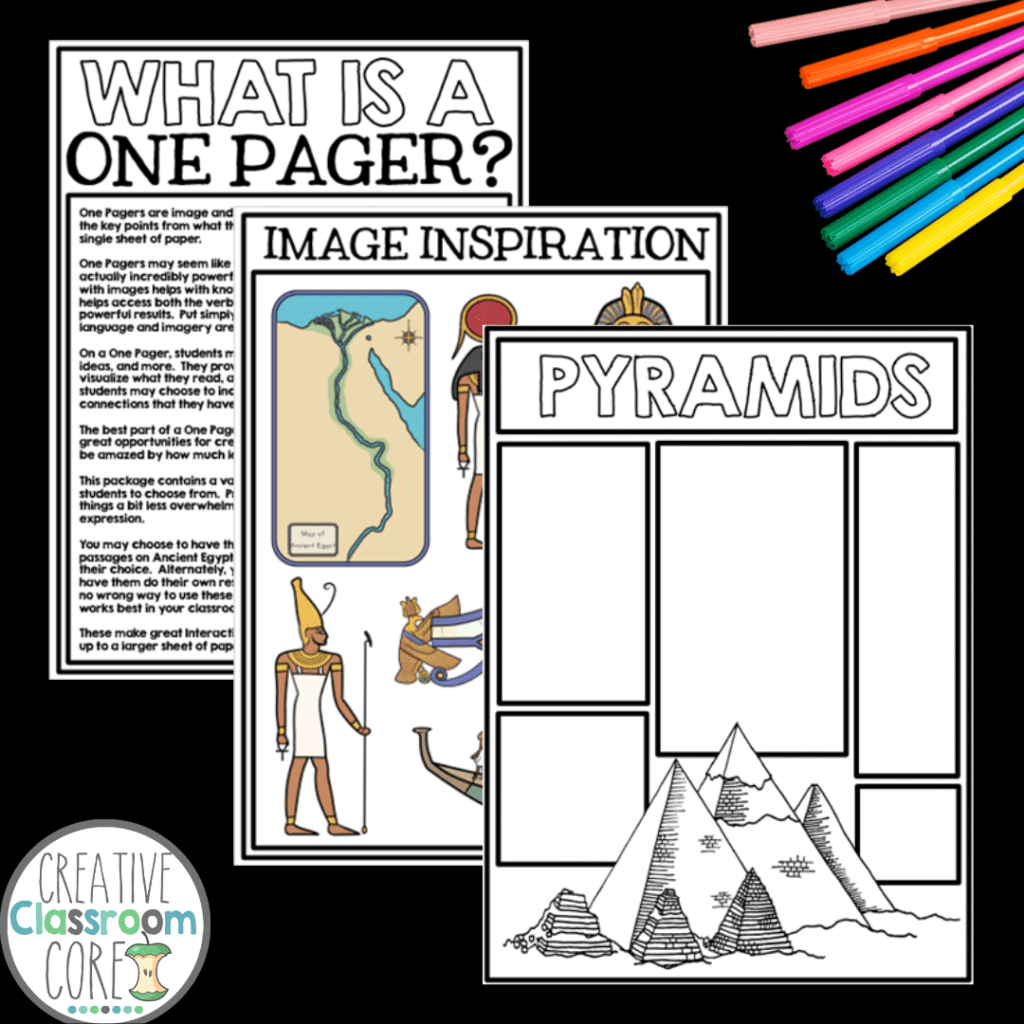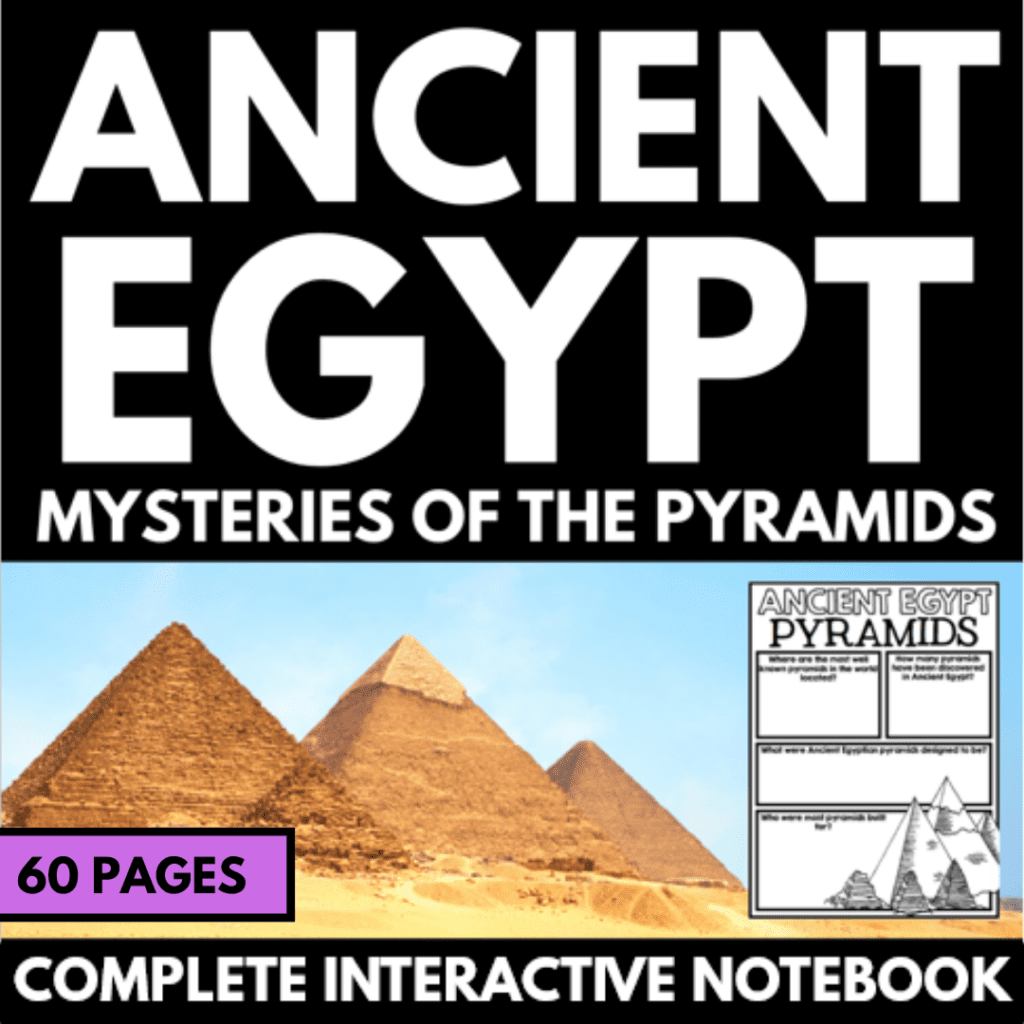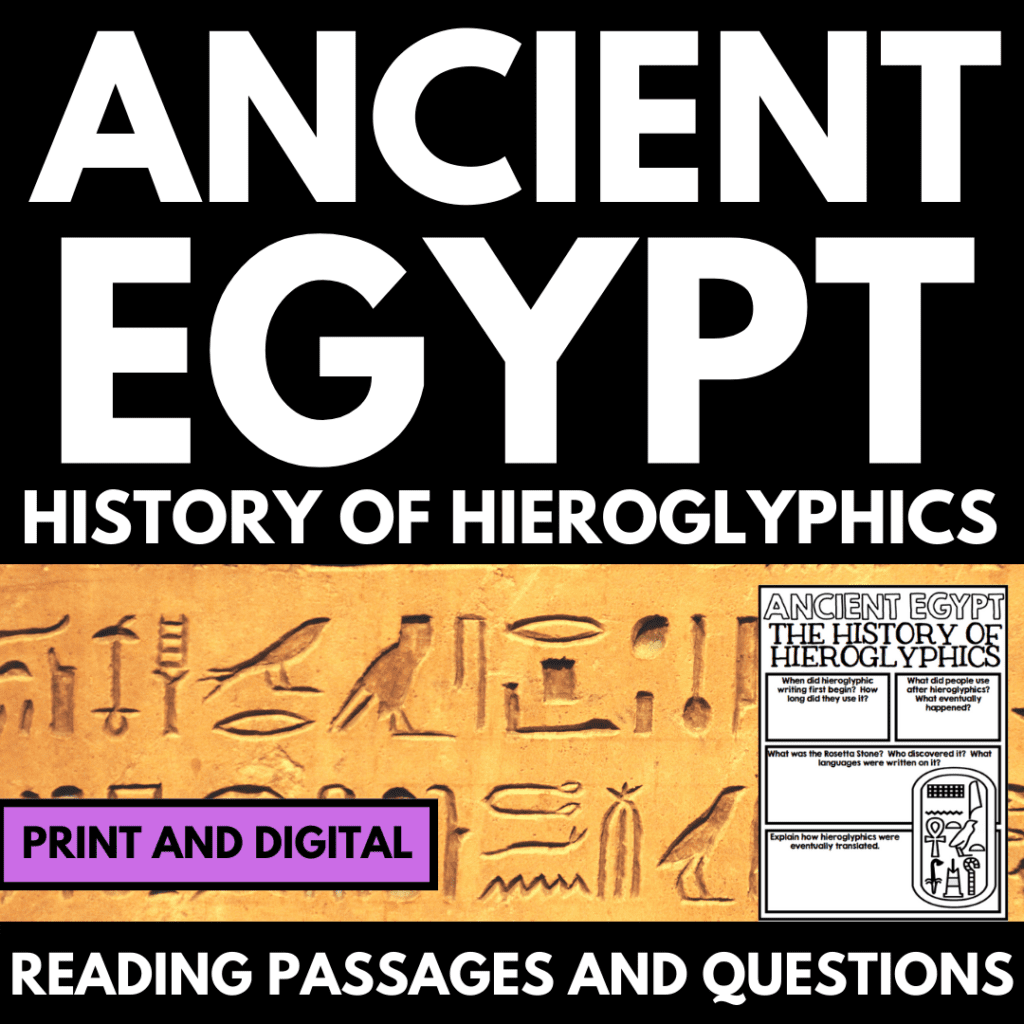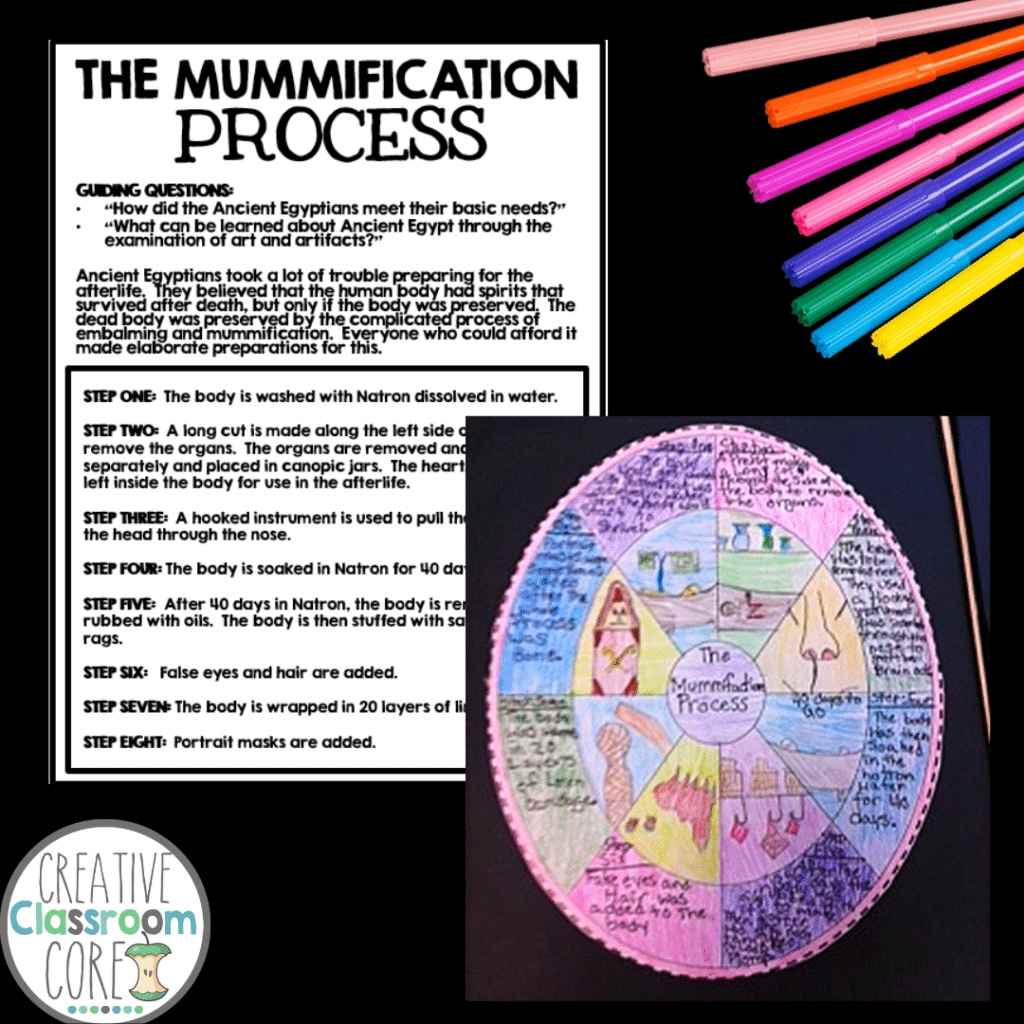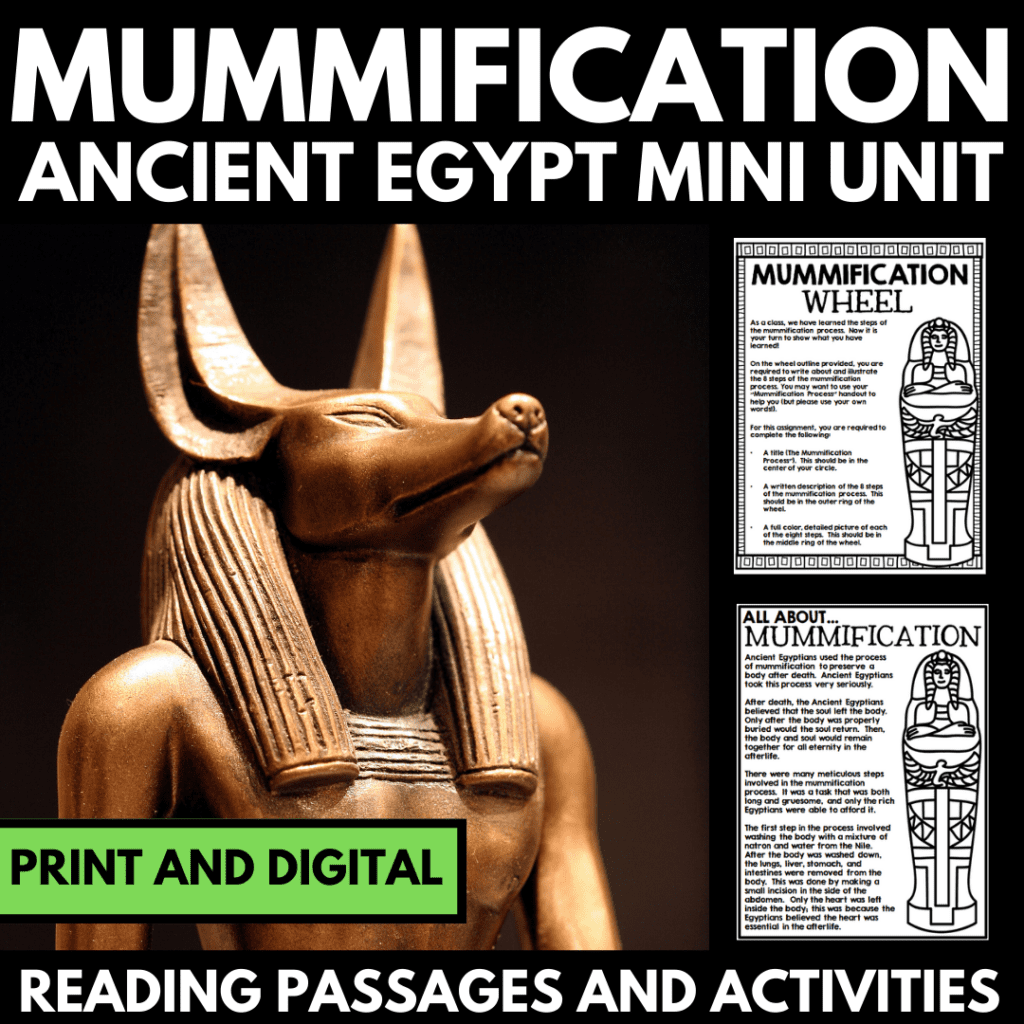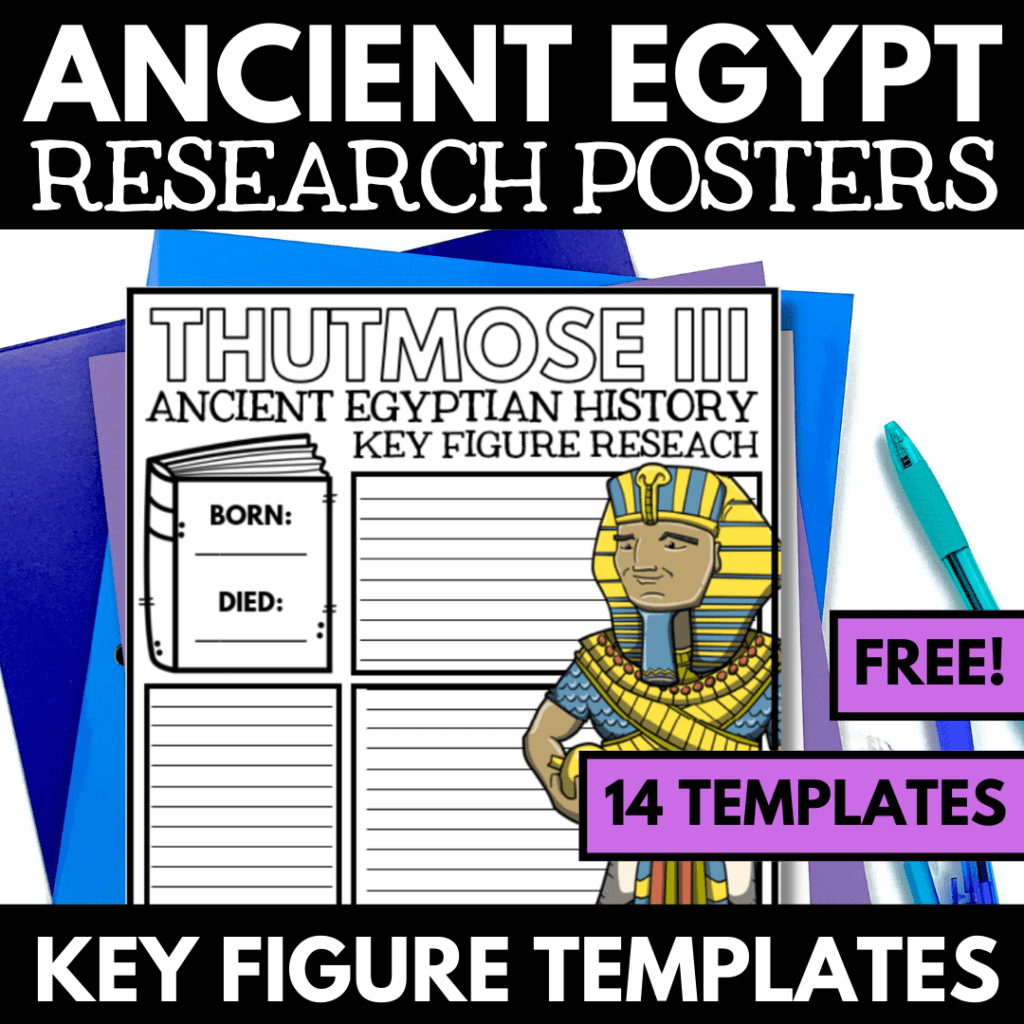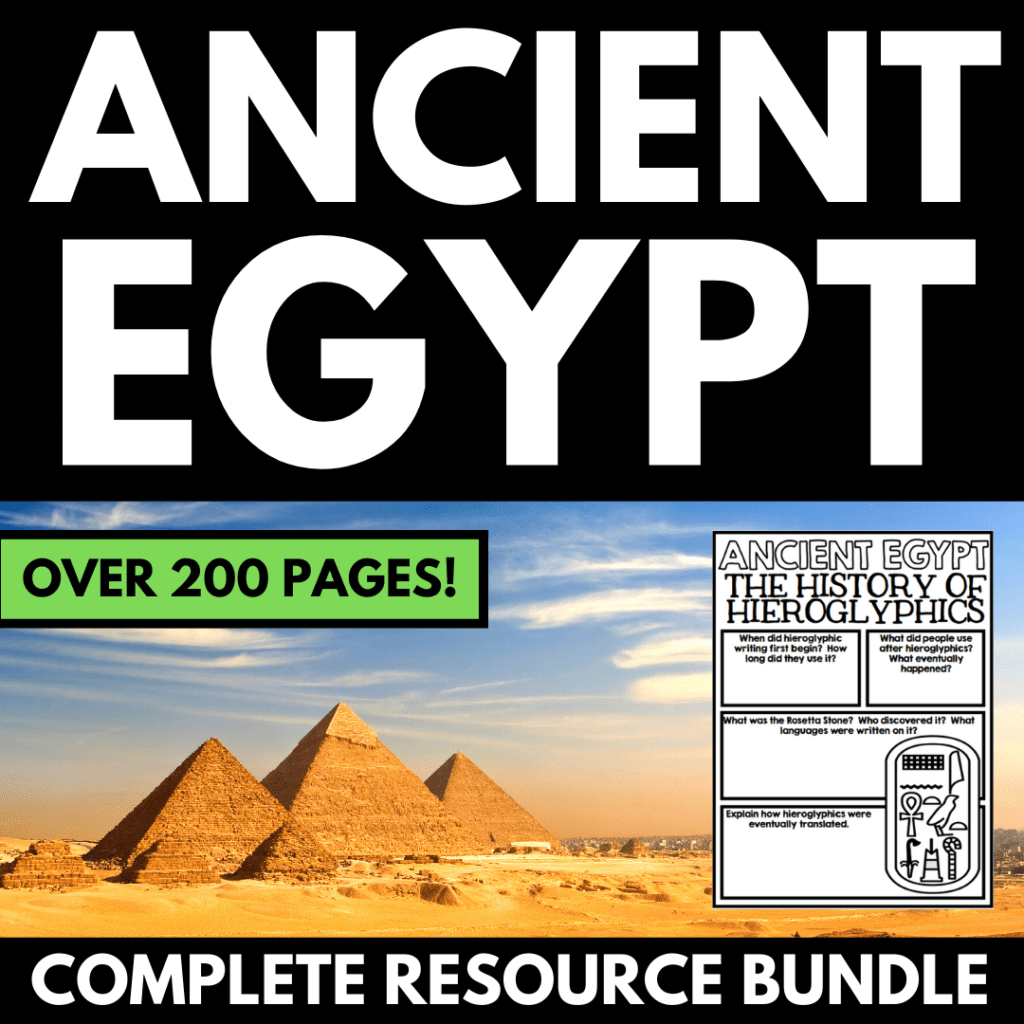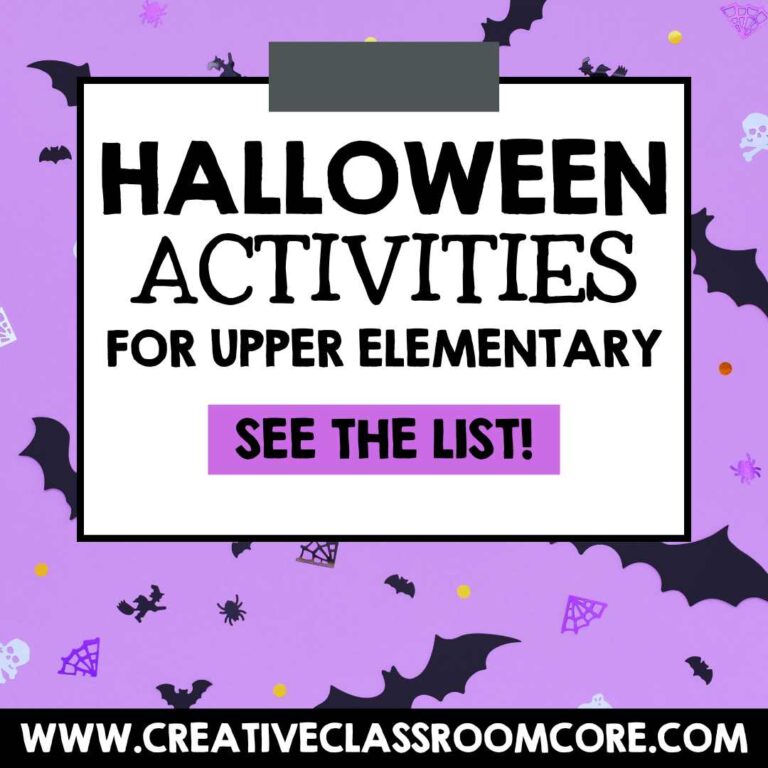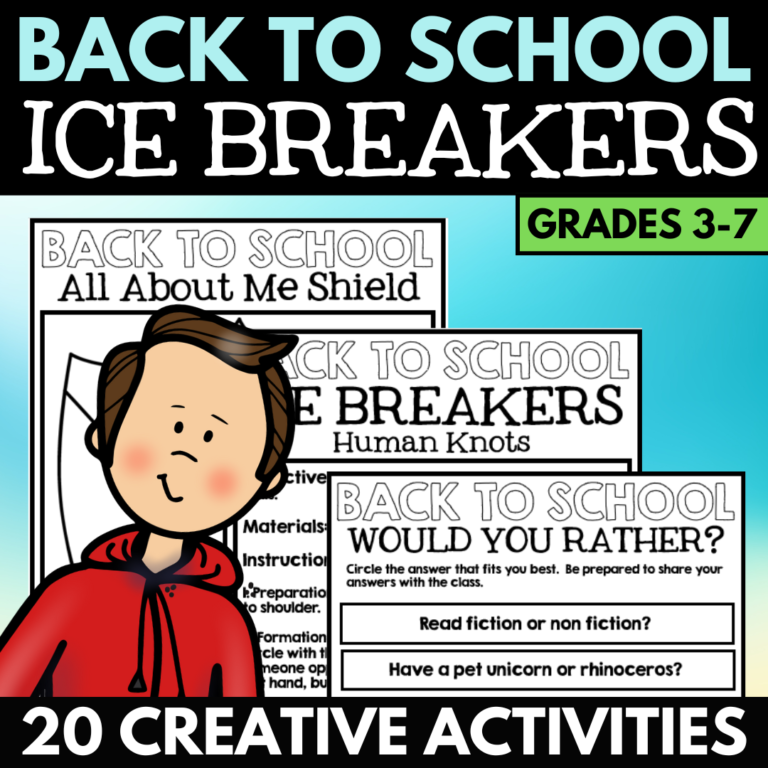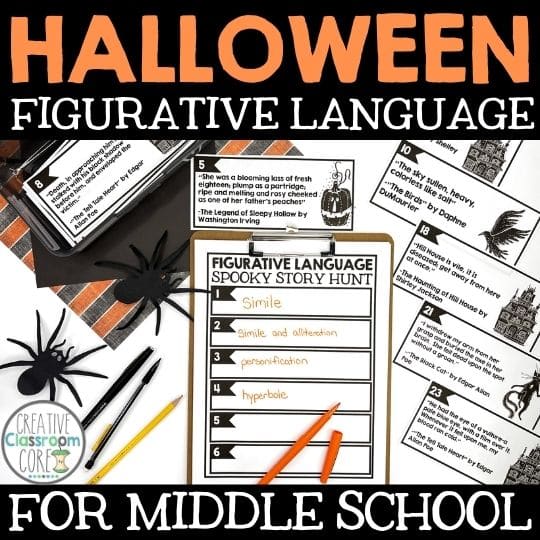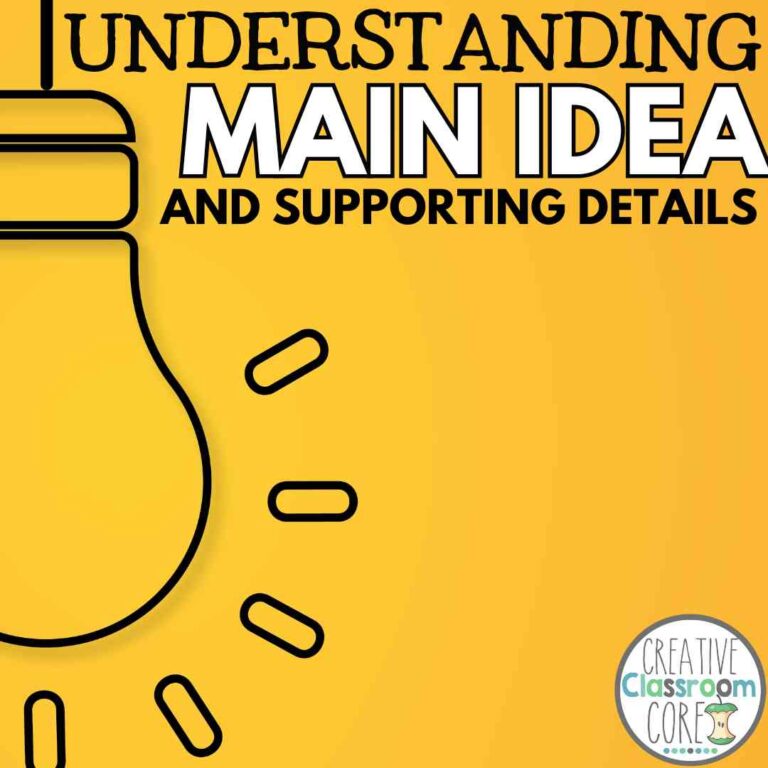7 Essential Topics for Your Next Ancient Egypt Unit
By MARISSA DESPINS Updated Oct 31, 2023
I am just going to come right out and declare how much I love teaching about Ancient Civilizations. I think it is incredibly important to teach students about the stories of our past. I was a middle school history teacher for over 15 years, and learning about Ancient Mesopotamia, Egypt, Greece, and Rome was as exciting for me as it was for my students. Our Ancient Egypt unit was one of my favorites. The stories of the pyramids, pharaohs, and mummies brought almost instant engagement to my students.
When planning my Ancient Egypt unit, I start with the following 7 topics: Daily Life, the Nile River, Gods and Goddesses, the Role of the Pharaoh, the Pyramids, Hieroglyphics, and Mummification. Next, I flush out each individual topic. To do this, I focus on the key information I want students to take away. There is just so much teachable content. Because of this, I try my best to focus on the essentials. If you’re looking for more engaging history lessons, check out these 5 tips.
Below I share some of the reasons why I focus on each topic. I also share some fun activities to do along with them. I hope you are able to find something to spice up your history curriculum and make your planning a little bit easier.
When planning my Ancient Egypt unit, I start with the following 7 topics: Daily Life, the Nile River, Gods and Goddesses, the Role of the Pharaoh, the Pyramids, Hieroglyphics, and Mummification. Next, I flush out each individual topic. To do this, I focus on the key information I want students to take away. There is just so much teachable content. Because of this, I try my best to focus on the essentials.
Below I share some of the reasons why I focus on each topic for my Ancient Egypt unit. I also share some fun activities to do along with them. I hope you are able to find something to spice up your history curriculum and make your planning a little bit easier.
The Nile River
At the start of my Ancient Egypt unit, I always like to begin with geography. It is so important for kids to be able to locate the place we are talking about on a map. Incorporating map lessons and activities into your classroom instruction helps to increase engagement. Also, mapping encourages critical thinking, generates connections, and supports cross-curricular learning. This is a great opportunity to talk about the concept of civilization, and how the Nile River helped Egypt to thrive.
As teachers, we are well aware of the number of key skills that are slowly becoming obsolete in the digital world. However, the ability to read a map is still a super essential tool for students to practice and learn. Coloring, labeling, and learning about maps in Social Studies class helps students make sense of the world. Also, map making helps to build spatial reasoning skills.
Interested in spicing up the Egyptian geography activities you work on in your classroom? Check out these interactive notebook ideas for teaching ancient history.
Looking for some resources to teach about the Nile River? Click here or on the image below to snag my complete Nile River Unit from my TPT shop.
Daily Life In Ancient Egypt
Moving on to what daily life was like in Ancient Egypt seems like a pretty natural shift after a discussion of Egyptian Geography. Comparing and contrasting the daily life of the Egyptians to our lives today is great opportunity for students to build connections to the content. For more insights on teaching about ancient civilizations, you might find these engaging strategies helpful.
Most Ancient Egyptians were poor farmers. Boys learned the jobs of their fathers. Young girls learned how to take care of the home and family from their mothers. Poor Egyptians did not have many rights. Most did not attend school.
The rich men of Ancient Egypt lived very busy lives. Many spent their days trading along the Nile, or working as priests.
Unlike many Ancient Civilizations, which did not give many rights to women, the Ancient Egyptians saw women as equals under the law. Even though the law saw them as equals, they were still not treated the same as men. However, they had many more rights than women did in other Ancient Civilizations.
I love to use these reading passages and graphic organizers when discussing daily life in Ancient Egypt. As an added bonus, the pages look super great when colored up and glued into our Interactive Notebooks!
For more interactive materials to use for your Ancient Egypt unit, check out these interactive notebooks.
Looking to grab a mini unit on this topic? Check out the resource in my TPT shop by clicking here or on the image below.
Gods and Goddesses of Ancient Egypt
Mythology is always a favorite topic in my history classroom. Many of my students are familiar with the gods and goddesses of Ancient Greece. However, many of the stories of Egyptian Mythology are new to them. This makes it an even more engaging topic to learn (and teach!) about! If you’re interested in exploring more myths, you might enjoy these Greek myths interactive notebook ideas.
The study of mythology can be a super important way to approach history with students. It requires them to examine ancient times and their effects on the modern world. Teaching ancient myths helps give context to the world we live in, the literature we read, and the things we believe in.
The Ancient Egyptian believed strongly in life after death. They believed that the dead spent their days eating, drinking, and visiting with other dead family members. After death, Egyptians believed they would live a life of pleasure and relaxation.
These research templates are fun ways for students to record information about the different gods and goddesses. We keep our completed templates in our Interactive Notebooks. This way, we can refer back to them (and add to them!) as we read through different Egyptian myths.
Looking to pick up a mini Ancient Egypt unit on this topic? Grab my Ancient Egypt Gods and Goddesses resource from my TPT shop by clicking here or on the image below.
The Role of the Pharaoh
No Ancient Egypt unit is complete without some discussion of the Pharaoh!
The Pharaoh was the head of the government of Egypt. They were the person in charge of Egypt’s economy. Also, the Pharaoh was believed to be a god on earth. Because of this, they were worshipped by the people of Egypt. The Pharaoh played a huge role in the way the history of Ancient Egypt played out.
These pennant projects are a fun way to record student learning. First, students read and learn about the role the Pharaoh played in Ancient Egypt. Then, students record the top three things they learned on these huge pennant projects. They make great review activities. Also, they look amazing when hung up on the hallway bulletin board!
Interested in supplements for your Egyptian Pharaoh lessons? Click here or on the image below to grab my complete mini unit!
The Pyramids of Egypt
I still have very vivid memories of learning all about the pyramids when I was in middle school, and building my own out of my brother’s lego blocks. The pyramids bring with them a lot of mystery and fascination, Because of this, they make a great way to hook reluctant social studies learners.
The majority of your students will likely have a lot of background knowledge about the pyramids. This is because they are often depicted in movies and television. However, incorporating the pyramids into your Egypt curriculum is a great opportunity to fill in the historical gaps. Doing so helps give them some factual knowledge about the amazing structures.
In Ancient Egypt, pyramids were considered to be “houses of eternity”. They were designed as places to house the dead. Because of this, they held everything they would need for the afterlife. Most pyramids were built as tombs for pharaohs and their families. Over 130 pyramids have been discovered in Egypt!
One Pager projects are excellent activities to incorporate into your Ancient Egypt unit. These pages work great for showcasing student learning about the pyramids. Basically, one Pagers are image and text filled pages that allow students to take the key points from what they have learned and highlight them on a single sheet of paper. Selecting and recording information along with images helps with knowledge retention. Mixing images with text helps access both the verbal and visual parts of the brain, leading to powerful results. Put simply, students are able to remember more when language and imagery are mixed.
For those interested in the power of visual learning, you might find this article on interactive notebooks insightful.
Want to incorporate some lessons on the pyramids of Egypt into your history curriculum? Snag my complete mini unit by clicking here or on the image below!
Egyptian Hieroglyphics
Hieroglyphics are a fascinating topic to teach about. They were one of the first writing systems in the world. They were used as a form of communication and record keeping. The word itself means “sacred writing” – the Egyptians believed it conveyed the words of the gods. Through words, they were able to preserve the memory of the deceased. Doing this helped them to preserve and pass down history.
Learn more about hieroglyphics in the Ancient Civilizations Unit Free Resource Roundup.
Looking for a COMPLETE mini unit on Hieroglyphics? Visit my TPT shop by clicking here or on the image below and grab yourself a copy!
The Mummification Process
While I have found most of the topics in my Ancient Egypt unit to be engaging for students, I think mummification in the one they find most interesting. I mean, who can resist learning about a process that involved a pointy hook inserted into the nose to remove the brain? I can say without hesitation that it most definitely peaks the curiosity of this age group!
Teaching and learning about mummification is important. Egyptian mummies preserve key information about daily life, disease, diet, and religious beliefs. Through this, we are given valuable insight into key elements of this Ancient Civilization.
After death, the Ancient Egyptians believed that the soul left the body. Only after the body was properly buried would the soul return. Then, the body and soul would remain together for all eternity in the afterlife.
Ancient Egyptians used the process of mummification to preserve a body after death. They took this process very seriously. There were many meticulous steps involved in the mummification process. It was a task that was both long and gruesome, and only the rich Egyptians were able to afford it.
This Mummification Wheel Project is my all time favorite way to showcase student understanding of the mummification process. First, students learn about the 8 different steps that the Egyptians went through when mummifying their dead, They do this by working through a reading passage and comprehension questions. Next, students list, describe, and illustrate the different steps on a wheel template. Completed wheels look great in Interactive Notebooks. They also make gorgeous hallway displays of student learning!
Pick up my complete Mummification Mini Unit in my TPT shop by clicking here or on the image below.
Looking for some free activities for your next ancient Egypt unit?
Click here or on the image below to grab a FREE RESOURCE for students to use to research key figures in Ancient Egypt! This FREE unit contains a variety of different graphic organizers that are perfect for independent or group research projects!
Looking for the complete Ancient Egypt Unit Bundle?
This GIANT ANCIENT EGYPT UNIT BUNDLE contains over 200 pages, and includes ALL of my Ancient Egypt mini units! You can grab the complete bundle at a greatly reduced price by clicking here or on the image below!
Want to see the complete unit in action?
Check out the YouTube video below to see this engaging Ancient Egypt unit in action!
Interested in reading more blog posts about Ancient Egypt?
Check out my previous post all about this Ancient Civilization below!
Ancient Egypt: Interactive Notebooks
5 Tips for Engaging History Lessons
The Importance of Teaching About Ancient History
Ways to Make Your Ancient History Unit more Engaging
Interested in signing up for my email list?
If you are interested in signing up for my email list, you can do so by clicking on the link below. I periodically send out emails with free resources, teaching tips, and exclusive deals. Signing up will also give you immediate access to some of my best selling Interactive Notebook resources – foldables, graphic organizers, and other fun activities.

